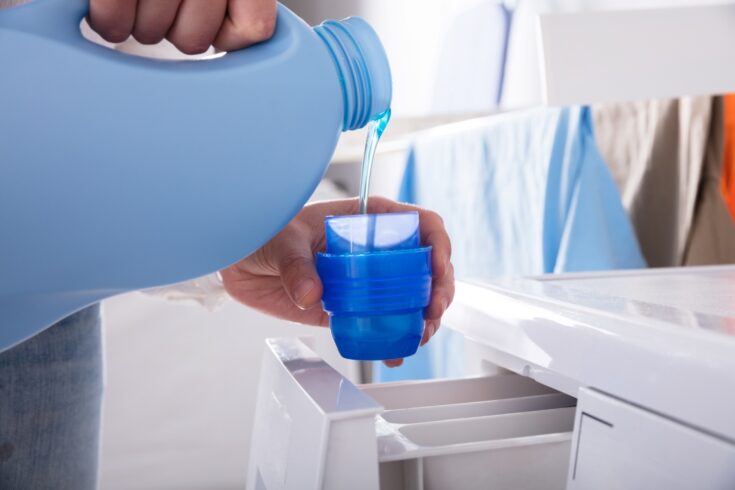Enabling ‘invisible’ stains to be pinpointed and revealing their chemical make-up in unprecedented detail, these tools are also generating new insights into how stains and fabrics interact.
Developed by Durham University, they incorporate advances in spectroscopy achieved at Durham with support from the Engineering and Physical Sciences Research Council (EPSRC, part of UK Research and Innovation). Spectroscopy involves analysing the ‘signature’ of the light waves reflected or emitted by materials. Each chemical element and compound produces its own unique signature.
As well as past EPSRC support that has enabled Durham to build up its underlying capabilities in spectroscopy, the targeted three-year EPSRC-funded research project ‘Understanding Stain-Surface Interactions and Mechanisms for Removal’ runs until 2024.
These tools are part of an extensive set of analytical and modelling techniques which are being refined and harnessed by an EPSRC Prosperity Partnership involving Durham, Imperial College London and Procter and Gamble.
Taking aim at stains
This partnership is helping Procter and Gamble devise and test new detergent formulations that will provide increased cleaning power at lower temperatures and using less water, reducing carbon footprint and cutting costs for consumers.
The new tools can detect greasy stains present in low concentrations, and which cannot be seen by the eye and can be challenging to remove.
They are also generating deeper understanding of the chemistry of stains that will underpin better mechanisms for stain removal, especially when stains aren’t fresh or are hard to eliminate.
Medieval manuscripts
Overall, these tools will shorten the time it takes to develop detergents and will aid the development of new products that ensure clothes both look clean and are clean.
The same underlying expertise in spectroscopy has enabled the Durham team to analyse and accurately identify the different types of ink used in illuminated medieval books, with funding from the Arts and Humanities Research Council.
Partnership in progress
The four-year Prosperity Partnership, ANTENNA: Advanced Tools for Predictive Cleaning in a World of Resource Scarcity, is receiving £1.8 million in EPSRC funding. EPSRC Prosperity Partnerships support collaboration between businesses and researchers with the goal of delivering transformative solutions that will bring economic and societal benefits.
Improved detergents for cleaning clothes will not just improve consumer satisfaction. They will offer reduced cost-of-use, a lower environmental footprint by cutting energy and water usage and increase garments’ lifespans by making washing less abrasive.
ANTENNA runs until 2025.
Striving for a step-change
Professor Miles Padgett, EPSRC’s Interim Executive Chair, says:
This EPSRC-funded research and Prosperity Partnership demonstrate how fundamental science can feed directly into efforts to achieve game-changing commercial advances that help consumers and make a major contribution to sustainability. As the work with medieval manuscripts shows, the research also emphasises the value of science transferable between very different fields of application.
Professor Andy Beeby of Durham University’s Department of Chemistry says:
Spectroscopy is amazingly versatile and allows detailed study of molecular-level chemistry in a non-invasive, non-damaging way. The fact that the same basic techniques can help develop detergents of the future and shed light on the distant past is testament to their capabilities.
Improving consumers’ lives
David Baez Chavez, Director of Analytical and Measurement Sciences, Fabric and Home Care at Procter and Gamble, says:
The development of a wide-range of advanced tools for predictive cleaning is key to design everyday products in more efficient and sustainable ways. ANTENNA Prosperity Partnership, a multi-year programme with a major footprint in the North-East, is a clear example of P&G’s commitment to connect and develop solutions in fundamental scientific fields to improve consumer’s lives.
Further information
About Procter and Gamble
Procter and Gamble serves consumers around the world with one of the strongest portfolios of trusted, quality, leadership brands, including:
- Always®
- Ambi Pur®
- Ariel®
- Bold®
- Braun®
- Daz®
- Fairy®
- Febreze®
- Gillette®
- Head & Shoulders®
- Herbal Essences®
- Lenor®
- Olay®
- Oral-B®
- Pampers®
- Pantene®
- Tampax®
- Venus®
- Vicks®
For more information please visit the Procter and Gamble website.
Top image: Credit: AndreyPopov, iStock, Getty Images Plus via Getty Images

